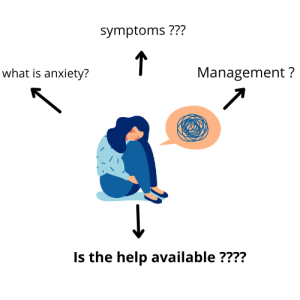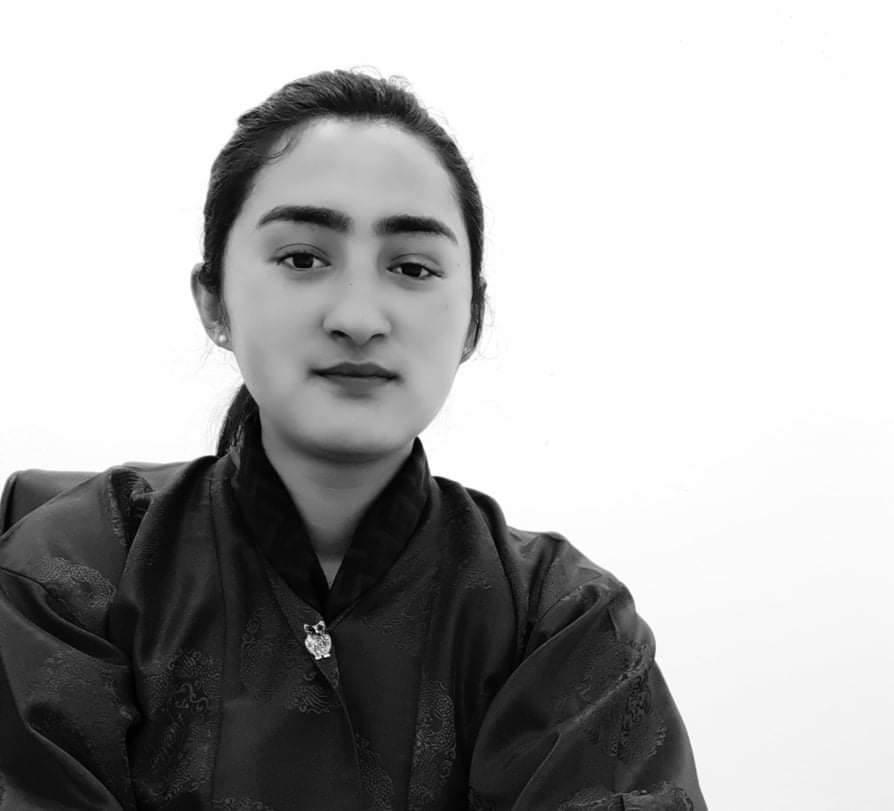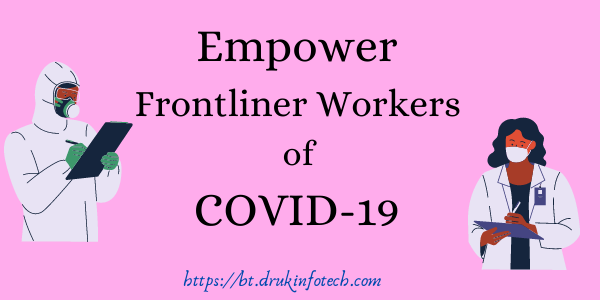Working in times of uncertainty and fear, I often see patients walking into the room with the complaint of hyperventilation, palpitations, tingling sensation over the limbs, sweating, and some with fear and anxiety. They complain of having heart disease or they are going to die due to the pounding heart or not being able to catch a breath. Today in this blog post, I will be discussing anxiety, its management, and some basic information about anxiety disorders.

Fear vs. Anxiety
Fear and anxiety often occur together, but these terms are not interchangeable. Fear is an intense biological response to immediate danger, while anxiety is an emotion regarding things we think may happen. Fear is the emotional response to a real or perceived imminent threat, whereas anxiety is the anticipation of a future threat. Obviously, these two overlap, but they also differ, with fear more often associated with surges of autonomic arousal necessary for fight or flight, thoughts of immediate danger, and escape behaviors, and anxiety more often associated with muscle tension and vigilance in preparation for future danger and cautious or avoidant behaviors.
Normal anxiety Vs. Anxiety disorder
Some level of anxiety, or stress, is an everyday part of life. It helps us to start a task, end a task or be productive or it helps us to get going with everyday life. You might feel anxious when faced with a problem at work, before taking a test, or before making an important decision. But anxiety disorders involve more than temporary worry or fear. For a person with an anxiety disorder, the anxiety does not go away and can get worse over time. The symptoms can interfere with daily activities such as job performance, school work, and relationships.
Some examples of everyday anxiety that are commonly experienced by most people.
- Worrying about paying bills, finding a job, and other important life events.
- Experiencing nervousness before a big presentation, performance, or important event.
- Having feelings of sadness and anxiety immediately after a traumatic event.
However, more severe mental health conditions like anxiety disorder produce a different experience.
- Constant, uncontrollable worry that creates so much distress that it interferes with daily life
- Experience random panic attacks for no apparent reason, which creates a profound fear of future panic attacks.
- Have recurring nightmares and flashbacks related to traumatic events that occurred several months or even years ago.
Therefore, According to the Diagnostic and Statistical Manual of Mental Disorders, Fifth Edition(DSM-5) Anxiety Disorders include disorders that share features of excessive fear and anxiety and related behavioral disturbances. Anxiety disorders appear to be caused by an interaction of biopsychosocial factors, including genetic vulnerability, which interacts with situations, stress, or trauma to produce clinically significant syndromes.
Symptoms of Anxiety Disorders
The main symptom of anxiety disorders is excessive fear or worry. Anxiety disorders can also make it hard to breathe, sleep, stay still, and concentrate. Your specific symptoms depend on the type of anxiety disorder you have. Common anxiety signs and symptoms include:
- Feeling nervous, restless, or tense
- Having a sense of impending danger, panic, or doom
- Having an increased heart rate
- Breathing rapidly (hyperventilation)
- Sweating
- Trembling
- Feeling weak or tired
- Trouble concentrating or thinking about anything other than the present worry.
- Having trouble sleeping
- Experiencing gastrointestinal (GI) problems
- Having difficulty controlling worry
- Having the urge to avoid things that trigger anxiety
Types of Anxiety Disorders
Several types of anxiety disorders exist but whatever form of anxiety you have, treatment is available.
- Agoraphobia is a type of anxiety disorder in which you fear and often avoid places or situations that might cause you to panic and make you feel trapped, helpless, or embarrassed. Someone with agoraphobia may be scared of traveling on public transport or leaving the house
- Anxiety disorder due to a medical condition includes symptoms of intense anxiety or panic that are directly caused by a physical health problem.
- Generalized Anxiety Disorder (GAD) is characterized by persistent and excessive worry about a number of different things. People with GAD may anticipate disaster and may be overly concerned about money, health, family, work, or other issues. Individuals with GAD find it difficult to control their worries.
- Panic disorder involves repeated episodes of sudden feelings of intense anxiety and fear or terror that reach a peak within minutes (panic attacks). The person may have feelings of impending doom, shortness of breath, chest pain, or a rapid, fluttering, or pounding heart (heart palpitations). These panic attacks may lead to worrying about them happening again or avoiding situations in which they’ve occurred.
- Selective mutism is a consistent failure of children to speak in certain situations, such as school, even when they can speak in other situations, such as at home with close family members. This can interfere with school, work, and social functioning.
- Separation anxiety disorder is a childhood disorder characterized by anxiety that’s excessive for the child’s developmental level and related to separation from parents or others who have parental roles.
- Social anxiety disorder (social phobia) involves high levels of anxiety, fear, and avoidance of social situations due to feelings of embarrassment, self-consciousness, and concern about being judged or viewed negatively by others.
- Specific phobias are characterized by major anxiety when you’re exposed to a specific object or situation and a desire to avoid it. Phobias provoke panic attacks in some people.
- Substance-induced anxiety disorder is characterized by symptoms of intense anxiety or panic that are a direct result of misusing drugs, taking medications, being exposed to a toxic substance, or withdrawal from drugs.
- Other specified anxiety disorders and unspecified anxiety disorders are terms for anxiety or phobias that don’t meet the exact criteria for any other anxiety disorders but are significant enough to be distressing and disruptive.
Treatment of Anxiety Disorders
There are many treatments that people seek to help themselves reduce the symptoms. Normally people take anxiolytics and counseling. Some of the techniques to help with anxiety and therapies will be shared in the next blog post. If you are having the above-mentioned symptoms and it is hampering your daily functioning, it’s time to seek help.
P.S – The article is based on whatever I am learning through my experience with patients.

Hi,
I am Jamuna Mukhia working in one of the hospitals in Bhutan as a clinical counsellor. I provide Mental Health counselling services as well as addiction-related counselling services. I run this blog just to keep myself updated in the process of learning and unlearning things
My education level doesn’t define me, my experience of life does. I studied clinical counselling but realized life was counselling me instead. Subscribe to the blog post to learn more about your mental health.

